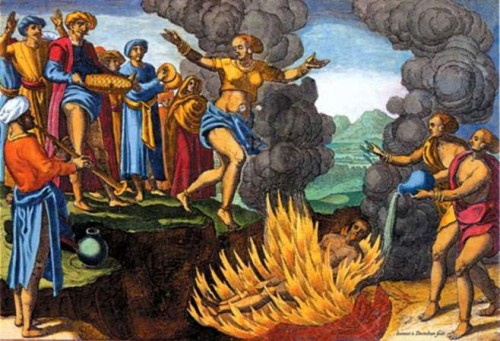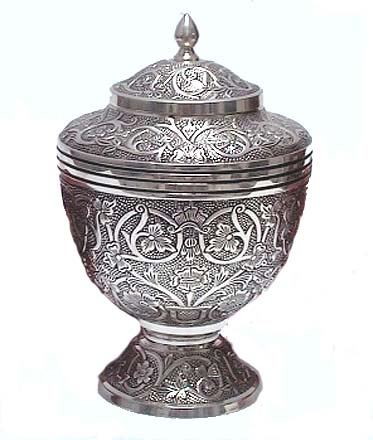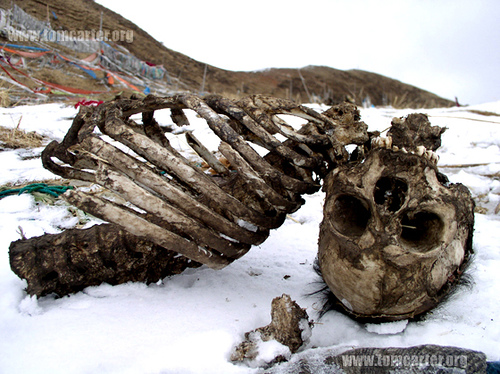It’s funny how many strange cultural traditions revolve around death and dying. Although the world is full of very odd traditions concerning, for example, rites of passage (ritual scarring, super sweet sixteen parties, and so on), marriage (a lasso to bind the couple together?), childbirth (smoking cigars to mark the occasion), and any number of other life events, it is the traditions centered on the afterlife that tend to come across as bizarre and sometimes unspeakable to other cultures and later civilizations. Here are just a few odd traditions that might have you shaking your head in disbelief.
- Sati. Anyone who is familiar with traditional Norse funerals will likely recognize Sati, the Hindu custom by which a widow throws herself atop her husband’s funeral pyre, effectively committing suicide. The difference is that the woman is not a virgin (probably) and the act is voluntary (the Norse tradition involves a virginal adolescent getting strapped to a flaming barge to accompany the dead man to the afterlife). The act of Sati has been attributed to the fact that a woman’s life was virtually over when her husband died, although there is much to suggest that social pressure played a role.

- Cremation. Here is one that Westerners are intimately familiar with, although other cultures may find it abhorrent. Upon death, the body is burned at high temperatures until nothing remains but a pile of ash, which is generally saved in an urn (for visitation purposes) or scattered at the dead person’s behest, usually in a familiar or special location (or several).

- Sky burial. This Tibetan practice involves dissecting a corpse and then placing the pieces where they can be eaten by carrion birds, usually on a high mountaintop. In some accounts the pieces are left more or less whole until only bones remain, at which point they are ground up and given to birds in tsampa (bread). Others relate that the bodies are stripped of flesh and the bones ground at the outset, so that the birds can feast without interruption.

- Sokushinbutsu. You’ve likely heard of mummifications practices from around the world, particularly in Egypt where the custom was perfected. But can you imagine people engineering the moment of their own death so as to be virtually mummified (with no outside help)? This is exactly what a select group of Buddhist monks, known as Sokushinbutsu, did in northern Japan (Yamagata Prefecture) starting over 1,000 years ago. They ate only seeds and nuts for three years in order to reduce body fat, then spent three more years eating bark and roots while drinking poisonous tea (to waste the body and kill maggots). Finally, they sealed themselves in a tomb with an air tube and a bell. When the bell stopped ringing, the tomb was sealed from the outside.

- Human sacrifice. No class, from communication studies to cultural anthropology, can prepare you for the gruesome practice of human sacrifice, a method that many ancient cultures used to appease their gods. Historically, South American cultures (Aztec, in particular) relied on these brutal killings to bring supernatural power (generally to a chieftain or shaman) as well as the favor of the gods. The victims were often special classes, like prisoners of war, vestal virgins, or even infants, and they notoriously died by terrible means like burning, beheading, or live burial.

